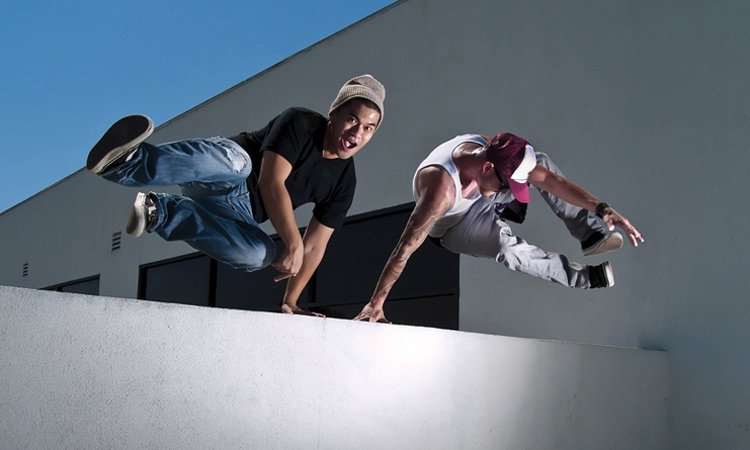One day Joe broke his arm. They said it was par for the parkour he practiced. Joe was a traceur. He lived in a world that consisted of one giant obstacle course, climbing and leaping, escaping and reaching, vaulting and rolling across his busy cityscape. Joe pushed himself on his runs, sometimes over cars or walls, sometimes across rooftops. Sometimes too far. Destiny watched him from afar, eyeing his toothpick arm and waiting for her chance.
On the morning when he broke his arm, Joe had gone with a couple of friends on a practice run for a home video they were making. A few warm-up moves gave Destiny her chance.
Joe ran up a small wall, perched on the top for an instant, then leaped out into space. His fingers closed around a horizontal metal bar in front of him, a bar that was supposed to stop his fall.
A bar supported by rotting wood.
The wood gave way, and Joe fell backwards.
The dusty ground broke more than his fall. He scrambled to his feet clutching his left wrist, which was bent down and then up in a sharp “Z.” Someone called the paramedics.
Joe woke up in the hospital, eyelids still heavy from the sedatives they’d given him. A white plaster cast from his wrist to his elbow sheathed his badly dislocated wrist and the two fractures in the radius.
For four weeks, Joe struggled with his disability. He learned to type with one hand, to live without daily showers, to let other people button his shirts and tie his shoes and wash his dishes.
After a month, the cast came off. Finally Joe was free. He spent ten minutes scratching and an hour and a half in the bathtub.
But all was not back to normal. After 29 days of disuse, the muscles in his left arm had shrunk and atrophied. His arm was now half its original thickness, and the skin hung like plastic wrap over his mended bone. The slightest attempt to turn or straighten the arm sent shockwaves of pain through his body.
Heat therapy helped to loosen the shriveled muscles, and he was able to pivot the wrist a little more each day. Soon it was time to start strength therapy. After a month of stockpiling cobwebs in the darkness under Joe’s bed, his old 35-pound dumbbell again found itself in the center of the room, squinting at the light. He grabbed at the handle enthusiastically with his left hand and heaved. Nothing. He strained. He sweated. He gritted his teeth and chewed into his tongue. He breathed muffled threats at the stubborn iron mass. The weight just sat there grinning. Tactics would have to change.
Joe borrowed a small expandable dumbbell from his sister (for a paperweight, he told her). It was tiny and covered in green plastic. Joe made sure no one saw him as he snuck it into his room.
As he struggled with his little green “paperweight,” he could hear his friends grunting under the weight of giant barbells, heaving and thrusting as they exerted themselves silly. He ignored the distant manliness.
It was hard work at first—even with such a ridiculously small plaything—and every lift pained him. But as the days went by and he ignored the ache in his wrist, it began to go away. Soon Joe had mastered the little green toy.
What pride he felt when he added two more little green disks. He still wasn’t strong, but he was getting strong. The solution would not be to crush himself with unrealistic expectations. It would be to start small and work up.
Soon he had added all of the little green disks to the dumbbell and was flinging it around like a house in a tornado. The iron dumbbell under the bed surrendered eventually as well, subjugated by determination and a few little green steps of progress.
Joe still has a ways to go before his arm is completely back to normal, but he knows that it won’t help to grizzle about the things he could once do with his arm. Instead, he looks back at how far he has come and ahead to complete recovery one day.
And when that day comes, well, I might just go out for another run.
